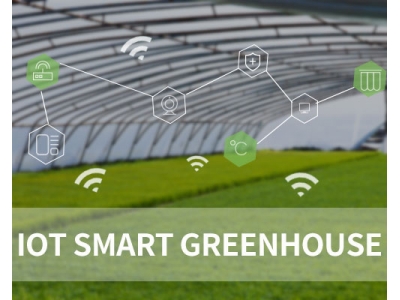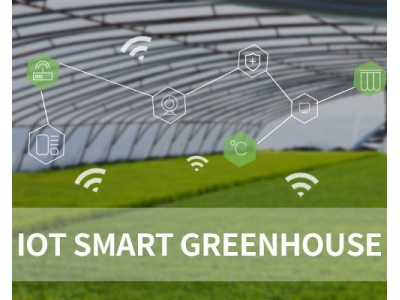
The Benefits of Smart Greenhouses
In agriculture, the Internet of Things (IoT) is more prevalent than ever, and smart greenhouses are a good example.

In agriculture, the Internet of Things (IoT) is more prevalent than ever, and smart greenhouses are a good example.
Global agriculture is under enormous pressure amid climate change, dwindling resources and rising populations. With increased unpredictability, it is not surprising that growers are turning to advanced technologies to improve production efficiency and crop resilience. In agriculture, the Internet of Things (IoT) is more prevalent than ever, and smart greenhouses are a good example.

A greenhouse provides a controlled environment customized to the vegetation needs cultivated inside. Traditionally, micro-climate and agronomic parameters have been recorded in a rather manual and inconsistent manner. There’s a limit to what can be measured, and farming practices are executed on a pre-defined, speculation-based schedule. On the other hand, weather changes throughout the day and “invisible” conditions like open doors or early-stage infection constantly influence the greenhouse environment and threaten to damage crops.
Smart greenhouses are bringing together conventional agricultural systems and new IoT technologies for complete visibility and automation.
Equipped with modern sensor and communications technologies, smart greenhouses automatically capture and deliver information 24/7 on the surroundings and crop. Collected data is fed into an IoT platform where analytical algorithms turn it into actionable intelligence to uncover bottlenecks and abnormalities. Accordingly, HVAC and lighting operations, alongside irrigation and spraying activities can be regulated on-demand. Continuous data monitoring facilitates the development of predictive models to assess crop disease and infection risks.
By unlocking massive crop insights, a smart greenhouse allows growers to minimize labor work, improve efficiency in resource and chemical use while optimizing yield rates.

IoT sensors allow farmers to collect various data points at unprecedented granularity. They provide real-time information on critical climate factors including, temperature, humidity, light exposure and carbon dioxide across the greenhouse. This data prompts relevant adjustments to HVAC and lighting settings to maintain the best conditions for plant growth while driving energy efficiency. In parallel, motion/acceleration sensors help identify doors that are unintentionally left open to ensure a strictly controlled environment.
In addition to ambient parameters, smart greenhouses enable farmers to stay on top of their crop conditions. This ensures irrigation and fertilization activities are on par with the actual needs of cultivated plants for maximized yields. For example, readings on soil volumetric water content indicate whether crops are under water stress. Likewise, measurements of soil salinity give useful insights on fertilization requirements. Based on this data, sprinkler and spraying systems can be automatically turned on to address real-time crop demands while minimizing manual intervention.

Crop infection is a persistent farming challenge, with every outbreak taking a heavy toll on the crop margins. Agrochemical treatments are available at hand, but farmers often don’t know the best time to apply them. Applications done too frequently raise ecological, safety and cost concerns, while failing to use treatments could lead to detrimental disease outbreaks. With the help of a machine learning platform, data on greenhouse environments, external weather and soil characteristics reveal valuable insights into existing risks of pest and fungi. Leveraging this information, farmers can apply treatments exactly when needed to ensure a healthy crop at the lowest chemical expense.
Greenhouses with high-value crops are a vulnerable target for thieves. As traditional surveillance networks with CCTVs are expensive to implement, many growers don’t have an effective security system in place. In this context, IoT sensors in smart greenhouses provide an affordable infrastructure to monitor door status and detect suspicious activities. Connected with an automated alarm system, they instantly notify growers when a security issue arises.